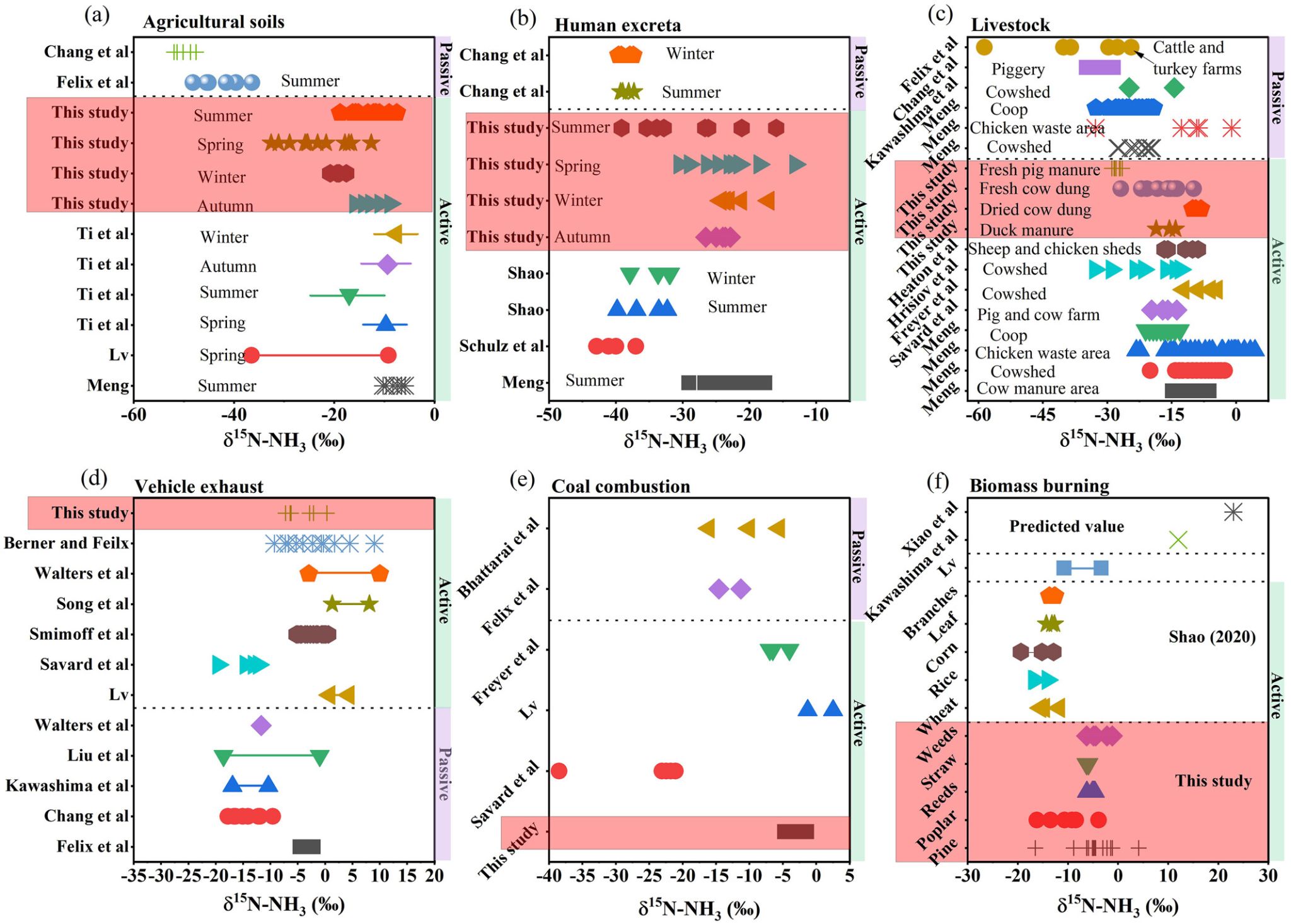To address the issue of haze pollution, both national and local governments have enacted a variety of measures to prevent and control air pollution, specifically by reducing SO2 and NOx concentrations. However, an increase in NH3 emissions may have counteracted the efforts of the state to manage high PM2.5 concentrations by reducing SO2 and NOx. Therefore, the first fundamental issue to be emphasized in designing a reasonable control strategy is the identification of NH4+ sources, which may be one of the most urgent issues for current and future air pollution control in China.
The δ15N values of NH3 sources from current reports could be used to estimate the source of atmospheric NH4+/NH3 to some extent. However, the overlap and uncertainty in δ15N values from different NH3 sources, hinder accurate identification of NH4+ source. Moreover, most studies in Tianjin concerning the sources of particulate NH4+ have been limited to specific seasons or single urban sites, potentially lacking comprehensive and comparative data across different seasons or functional sites, such as suburban and rural areas.
Based on the above background, Professor Xiaodong Li’s group from the School of Earth System Science at Tianjin University investigated the δ15N values from different NH3 sources collected by the active sampler. Results found that the combustion-related NH3 (c-NH3) exhibiting higher δ15N values compared to volatile NH3 (v-NH3). Furthermore, inconsistent seasonal variations were observed in the δ15N-NH3 values originating from emissions of agricultural soil and human excreta (Figure 1). The application of the Bayesian isotope mixing model (MixSIAR model) revealed a significant increase in the contribution of v-NH3 to NH4+ when incorporating current source data, as opposed to previous data, for δ15N of NH3 source. Additionally, the estimated contribution of v-NH3 to NH4+ exhibited significant seasonal variability, which is more reasonable than in the non-seasonal scenario. Therefore, this study demonstrated that the seasonal δ15N values of NH3 sources should be considered when estimating the contributions of different NH3 sources to NH4+ in PM2.5 by the MixSIAR model.

Figure 1 Comparison of δ15N values in NH3 sources between this study and previous studies
Based on the above δ15N values in NH3 source, this study further to investigated the variation and correlation in sources of NH4+ between urban and suburban locations in Tianjin. As a result, the NH4NO3 concentrations were notably difference between urban and suburban in summer, with no regional differences observed in winter. The contribution fractions of v-NH3 and c-NH3 exhibited similar seasonally patterns at both sites. However, during winter, the stable particulate NH4NO3 that formed from the c-NH3 in the upwind area could be transported to the downwind area, increasing the NH4+ concentration at suburban.
The above study established the seasonal characteristic spectrum of δ15N values of NH3 sources and deeply analyzed the spatial and temporal variation characteristics of NH4+ sources in PM2.5 in Tianjin, which provided a scientific basis for the development of locally adapted abatement strategies, and is of great significance for the mitigation of the increasingly serious atmospheric NH3 pollution.
Relevant results have been published in the top journals of geology and environment, such as Journal of Geophysical Research: Atmospheres and Science of The Total Environment. The first author is Hao Xiao, a 2023 PhD graduate of our institute, and the corresponding author is Professor Xiaodong Li. Associate Professor Shiyuan Ding and Master's student Chuanwen Ji of the group participated in the above research. This work was supported by the National Natural Science Foundation of China (Grant Nos. 42273020 and 41773006), the Postdoctoral Fellowship Program of China Postdoctoral Science Foundation (Grant No. GZC20231552), the Natural Science Foundation of Tianjin (Grant No. 22JCQNJC00700).
Article information:
Xiao Hao, Ding Shiyuan, Li Xiaodong. (2024), Sources of NH4+ in PM2.5 and their seasonal variations in urban Tianjin China: New insights from the seasonal δ15N values of NH3 source, Journal of Geophysical Research: Atmospheres, 129, e2023JD040169, doi: https://doi.org/10.1029/2023JD040169.
Xiao Hao, Ji Chuanwen, Ding Shiyuan, Li Xiaodong. (2024), Strategic control of combustion-induced ammonia emissions: A key initiative for substantial PM2.5 reduction in Tianjin, North China Plain, Science of The Total Environment, 928, 172328, doi: https://doi.org/10.1016/j.scitotenv.2024.172328.